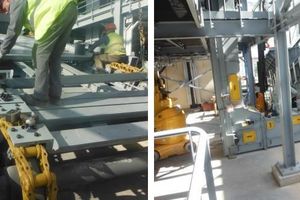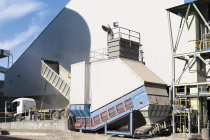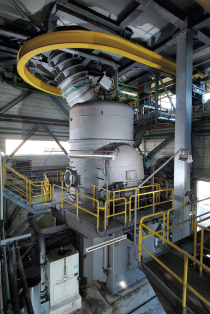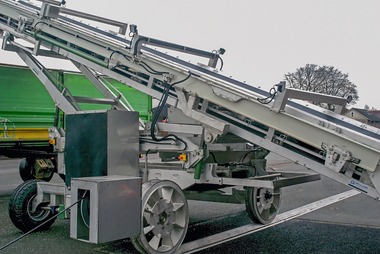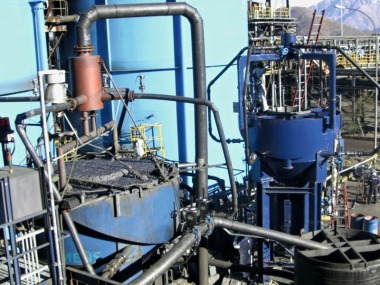Newly developed AUMUND Hybrid Feeder proves its worth at ERAMET
The recent commissioning at ERAMET Le Havre’s Sandouville Refinery in France brought another AUMUND project to a successful conclusion. The refinery is ERAMET’s “Nickel Salts and Metal” business unit, is wholly owned by the Group, and is one of three companies in its Nickel Division. Nickel mattes are transformed into high purity nickel metal and salts at this refinery. The raw material is extremely difficult to handle as it consists of particles which are almost perfectly spherical, creating challenges for the operator, in its reception, interim storage and onward transportation. To combat these challenges AUMUND Fördertechnik GmbH, after discussions with the customer, came up with a new Hybrid Feeder for this application.
The AUMUND BPB-SLP Hybrid Feeder combines the technical characteristics of a Samson® Material Feeder and a heavy-duty AUMUND BPB-SF Arched Plate Conveyor. The combination of these machines was the key to achieving a spillage-free process. In developing this product AUMUND engineers were able to draw on their experience gained in many previous reference projects, in ports and terminals as well as in the mining industry. Many operators in the ports and terminals sector already place their trust in the advantages of AUMUND’s Samson® Feeder, and the Arched Plate Conveyor with its heavy-duty chains has been relied upon for decades in mining and other industries internationally.
External chains and belted surface
The chains on the Hybrid Feeder are not underneath the conveyor as they are on the Arched Plate Conveyor, but are lateral, so that the conveyor sections are on the same level as the mid-point of the chain bolts. This was the technical solution which fulfilled the requirement of a fixed belted surface. This AUMUND design results in a lower overall height and a slightly wider machine, with a centre distance of 7.2 m, chain width of 3 m and belt width of 2.6 m. It is closed in with a dust cover and has a top-mounted filter, as well as a slewing grate, cleaning brushes and catching strips, for the fine, spherical bulk material.
It was essential that no spillage of the fine material could find its way into the production area, so effective sealing was paramount. The Hybrid Feeder also has a waterproof belt surface, and robust tractor-type chains are required due to the high densities of the material (2.8 to 4.3 t/m³). The hopper has a hydraulically swivelling grate for the purpose of intercepting and removing any foreign bodies which may have found their way into the material delivery containers.
Mobile handling devices deliver full containers of material onto a hydraulic tipping mechanism. The complete contents of the container are then tipped into the hopper, but the AUMUND design limits the volume of material that can enter the feed chute at any one time to a maximum of 33 t. As the ongoing process works at a volume of only 10 to 12 t/h, the Hybrid Feeder is set at a range of conveying speeds of only 0.001 to 0.006 m/s.
Additional order from the US
New Hybrid Feeders have since been sold by AUMUND, four of them by AUMUND USA, to M3 Engineering & Technology Corporation, which bought them for the Continental Gold Buriticá Project. Three of these four feeders are identical, with centre distances of 21 m, and will be located underneath the filter press. The fourth Hybrid Feeder will receive tailings from a front-end loader via a lateral hopper, and unlike the other three has a hydraulic drive. This machine’s purpose is to feed the tailings into buckets on a cable-car, made by a well-known Austrian ski-lift manufacturer, which takes the material back up the mountain to be backfilled into the mine. The machines will be supplied this year and are expected to be commissioned by mid-2019 at the latest.
www.aumund.com

